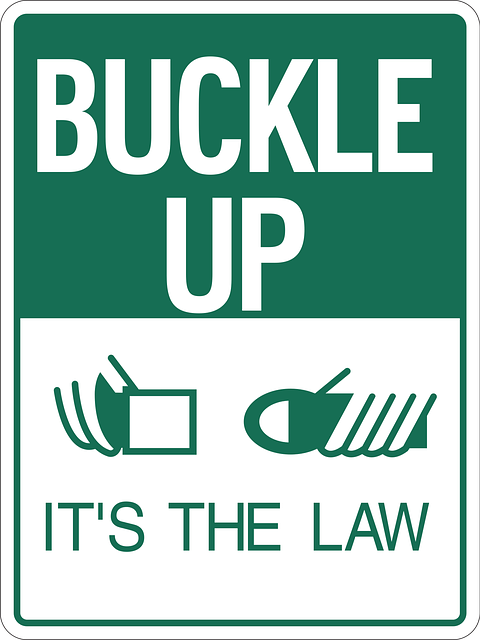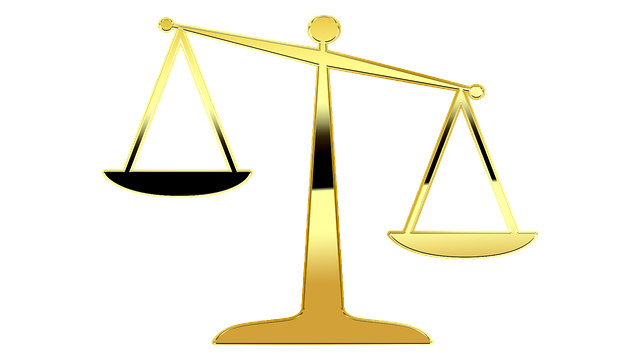Healthcare Compliance: Experts & Judges’ Role in Fair Sentences

Compliance experts navigate complex healthcare regulations, helping organizations avoid legal pitfal…….
In any justice system, the role of a judge is pivotal in ensuring fairness and justice are served. One of the most critical aspects of their jurisdiction is determining sentences for those found guilty of crimes. This intricate process involves a delicate balance between meting out punishment and considering mitigating factors, all while adhering to legal frameworks and ethical standards. The “Role of Judge in Determining Sentences” is a multifaceted concept that has evolved over centuries, shaped by societal values, legal reforms, and technological advancements. This comprehensive article aims to explore the intricacies of this role, its global impact, and the various factors influencing it. By delving into these aspects, we can gain valuable insights into the intricate world of criminal justice and the profound effects of judicial decisions.
The role of a judge in determining sentences involves several key responsibilities:
Interpretation of Laws: Judges are tasked with understanding and interpreting applicable laws, which include criminal codes, sentencing guidelines, and relevant case law. They must ensure that the sentence aligns with legal requirements and sets a precedent for similar cases.
Fact-Finding: During trials, judges assess evidence, witness testimonies, and arguments to determine the facts of the case. This process is crucial in making informed decisions regarding sentences, as it involves understanding the circumstances surrounding the crime.
Judging Mitigating Factors: One of the judge’s primary roles is to consider various mitigating factors that may influence the sentence. These include the defendant’s background, mental health, level of involvement in the crime, and any extenuating circumstances. By evaluating these factors, judges can tailor sentences to be more just and proportional.
Imposition of Sentence: Based on their assessment of the case and relevant factors, judges pronounce the sentence. This includes determining the type of punishment (e.g., imprisonment, probation, fine), its duration, and any additional conditions.
The concept of judicial sentencing has evolved over centuries, reflecting societal changes and legal reforms:
Ancient Times: In ancient civilizations like Rome and Greece, judges often had broad discretion in deciding sentences, which could include public humiliation, fines, and various forms of corporal punishment.
Medieval Period: During the Middle Ages, sentencing became more standardized across Europe, with specific laws dictating punishments for various crimes. However, there was still significant variability depending on the jurisdiction and the judge’s interpretation.
Modern Era: The 19th and 20th centuries saw a shift towards more structured sentencing guidelines, especially in common law countries. This period witnessed the development of uniform criminal codes and the establishment of minimum and maximum sentences for specific offenses.
Contemporary Practice: Today, many jurisdictions employ a combination of mandatory sentences (based on strict laws) and discretionary sentencing power for judges to consider individual circumstances. This balance aims to ensure both consistency and fairness in sentencing.
The “Role of Judge in Determining Sentences” has a profound global impact, with countries adopting and adapting various models:
Common Law Countries: Nations like the United States, Canada, and many Commonwealth countries follow the English common law system, which emphasizes judicial discretion. Judges play a central role in interpreting laws and determining sentences, often guided by precedents set in previous cases.
Civil Law Countries: Countries with civil law systems, such as those in Europe, Asia, and South America, typically have more structured sentencing guidelines. Judges still exercise discretion but within a framework of detailed legal codes.
Hybrid Systems: Some countries have developed hybrid models, combining elements of both common law and civil law systems. For instance, Australia and New Zealand have a blend of judicial discretion and mandatory minimum sentences.
Several global trends are influencing the role of judges in determining sentences:
Human Rights and Fair Treatment: There is a growing emphasis on human rights and ensuring fair treatment for all individuals, regardless of their background or social status. This trend promotes more equitable sentencing practices and challenges discriminatory laws.
Restorative Justice: Restorative justice models are gaining traction worldwide, focusing on rehabilitation and reconciliation rather than solely on punishment. Judges in some jurisdictions are adopting restorative practices to encourage reintegration and reduce recidivism.
Technological Integration: The digital age has brought advancements in legal research, case management systems, and data analytics. Judges now have access to vast amounts of information, enabling more informed sentencing decisions.
The economy plays a significant role in shaping the “Role of Judge in Determining Sentences” through various mechanisms:
Crime and Cost of Justice: High crime rates can strain judicial resources, leading to longer court backlogs and potentially impacting sentencing decisions. The cost of administering justice influences the allocation of judicial time and resources.
Economic Disparities: Socioeconomic disparities can affect both criminal behavior and sentencing outcomes. Judges may encounter defendants from diverse economic backgrounds, which can impact their sentencing preferences and discretion.
Impact on Victims: Economic considerations also extend to victim compensation and rehabilitation programs. Sentencing may include orders for financial restitution, reflecting the economic impact of crimes.
Investments in justice systems, including judicial infrastructure and training, are vital for effective sentencing:
Judicial Training Programs: Governments invest in training programs to enhance judges’ knowledge and skills, ensuring they stay updated with legal developments and best practices in sentencing.
Court Technology: The adoption of technology, such as digital case management systems, streamlines court processes, allowing judges to manage cases more efficiently and focus on complex sentencing decisions.
Community-based Justice Programs: Some countries invest in community-based justice initiatives, like restorative justice circles, which can reduce recidivism rates and provide alternatives to traditional sentencing.
Technological advancements have revolutionized the way judges approach sentencing:
Legal Research Databases: Online legal research databases provide judges with quick access to case law, statutes, and regulations, enabling efficient fact-finding and legal analysis.
Predictive Analytics: Advanced analytics and machine learning algorithms can assist in risk assessment and recidivism prediction, aiding judges in making more informed sentencing decisions. These tools analyze vast datasets to identify patterns and trends.
Video Conferencing: Remote video conferencing allows judges to conduct hearings and sentencing proceedings from remote locations, increasing accessibility and efficiency, especially in rural areas.
The future of technology in sentencing holds immense promise:
Artificial Intelligence (AI): AI-powered systems could assist in sentence prediction and recommendation, reducing bias and ensuring consistency. However, ethical considerations regarding the use of AI in decision-making processes must be addressed.
Blockchain Technology: Blockchain’s security features can enhance the integrity of criminal records, making it easier for judges to access reliable information during sentencing.
Virtual Reality (VR): VR may be used for restorative justice practices, allowing defendants and victims to engage in simulated experiences to promote understanding and healing.
Key policies and regulations govern the “Role of Judge in Determining Sentences”:
Constitutional Provisions: Many countries’ constitutions outline the rights of accused individuals and the role of the judiciary, setting the legal framework for sentencing.
Criminal Codes: These comprehensive laws detail various offenses, their classifications, and corresponding penalties, providing a foundational structure for judges to work within.
Sentencing Guidelines: Many jurisdictions have implemented sentencing guidelines that provide a non-binding framework for judges. These guidelines consider factors like crime severity, defendant’s criminal history, and rehabilitation potential.
Legal frameworks and policies significantly influence the evolution of sentencing practices:
Public Opinion: Public sentiment can shape sentencing laws and policies. For instance, public demand for harsher penalties for specific crimes may lead to legislative changes.
Legal Reforms: Periods of legal reform often result in significant changes to sentencing guidelines, reflecting evolving societal values and priorities.
International Treaties and Agreements: International treaties on human rights and criminal justice can influence national policies, leading to more equitable and consistent sentencing practices.
The “Role of Judge in Determining Sentences” faces several challenges and criticisms:
Bias and Disparities: Judges, like all human decision-makers, can be subject to bias, leading to unfair sentencing practices. Efforts must be made to address implicit biases and ensure consistent treatment for all defendants.
Lack of Uniformity: Despite guidelines, sentencing practices can vary widely between jurisdictions and even within the same jurisdiction over time. Standardization and ongoing training can help mitigate this issue.
Lengthy Court Processes: Complex cases and backlogs can result in prolonged court proceedings, impacting both victims and defendants. Implementing efficient case management systems is crucial.
To address these challenges:
Diverse Judicial Training: Comprehensive training programs should be developed to educate judges on recognizing and mitigating biases, ensuring they stay updated with legal trends, and enhancing their decision-making skills.
Standardized Guidelines: Developing standardized sentencing guidelines across jurisdictions can promote consistency and reduce disparities. These guidelines should be regularly reviewed and updated.
Efficient Case Management: Investing in technology and implementing efficient case management strategies can streamline court processes, ensuring quicker dispositions and reducing the burden on judges.
Case Study 1: Restorative Justice in New Zealand
New Zealand’s approach to sentencing emphasizes restorative justice practices. In a groundbreaking case, a judge ordered a young offender to participate in a restorative justice conference with the victim, resulting in a successful reconciliation. This approach not only reduced recidivism but also empowered both parties to take responsibility for their actions, demonstrating a more holistic and effective sentencing model.
Case Study 2: Mandatory Minimum Sentences in the US
The US experience with mandatory minimum sentences provides valuable insights. While these laws aimed to address disparities, they led to excessive and often unjust sentences, especially for non-violent offenses. Many states have since enacted reforms, showing that flexibility in sentencing can achieve public safety goals without imposing overly harsh punishments.
Case Study 3: Technology-Assisted Sentencing in the UK
The UK’s use of technology in sentencing is noteworthy. The ‘Sentencing Toolkit’ provides judges with data analytics and risk assessment tools to aid decision-making. This initiative has led to more informed sentences, reduced reoffending rates, and improved consistency across courts.
The future of the “Role of Judge in Determining Sentences” is filled with potential:
Personalized Justice: With advancements in data analytics, judges may gain insights into individual defendant profiles, allowing for more personalized sentencing plans that cater to their unique needs and backgrounds.
AI-Assisted Decision Making: While ethical considerations persist, AI could play a supporting role in sentence prediction and recommendation, ensuring consistency and reducing potential biases.
Virtual Courtrooms: Virtual reality technology may become more prevalent, enabling remote hearings and sentencing, especially in rural areas or for low-risk offenses, enhancing accessibility and efficiency.
To navigate these future prospects:
Continuous Legal Education: Judges should engage in ongoing professional development to stay abreast of technological advancements and emerging research in criminal justice.
Ethical Frameworks: Establishing clear ethical guidelines for using technology in sentencing is essential to ensure fairness and maintain public trust.
International Collaboration: Collaborative efforts between jurisdictions can foster the sharing of best practices, leading to more effective and equitable sentencing models.
The “Role of Judge in Determining Sentences” is a complex yet critical aspect of any justice system. It involves a delicate balance between meting out punishment and promoting fairness, rehabilitation, and public safety. By examining its historical context, global impact, economic considerations, technological advancements, policies, challenges, and future prospects, we gain valuable insights into this intricate field. As criminal justice systems evolve, judges must adapt to new trends and technologies while staying true to the core principles of justice and equality.
Q: How do judges decide on the severity of a sentence?
A: Judges consider various factors, including the nature and severity of the crime, the defendant’s criminal history, their role in the offense, mitigating circumstances, and relevant sentencing guidelines (if applicable). They assess these factors to determine an appropriate and just sentence.
Q: Can technology replace judges in sentencing decisions?
A: While technology can assist in various aspects of sentencing, it cannot fully replace human judgment. Judges bring expertise, experience, and ethical considerations to their decisions, ensuring fairness and contextually appropriateness. Technology is a tool to enhance efficiency and support judges rather than replace them.
Q: How do cultural differences impact sentencing practices?
A: Cultural norms and values significantly influence sentencing across the globe. For example, some cultures may emphasize restorative justice and reconciliation, while others prioritize punishment. Judges must consider these cultural nuances and interpret laws within their specific cultural contexts to ensure fairness and respect for diverse beliefs.
Q: What role does public opinion play in sentencing?
A: Public opinion can shape sentencing policies and laws, especially in democratic societies. However, judges are expected to make impartial decisions based on legal principles and evidence, rather than simply reflecting public sentiment. Balancing public expectations with legal standards is a delicate task for judges.
Q: How can bias in the justice system be addressed?
A: Bias can be mitigated through diverse judicial training programs that raise awareness of implicit biases and promote cultural competency. Standardized sentencing guidelines, transparent court processes, and ongoing evaluation of court decisions can also help identify and reduce potential biases.

Compliance experts navigate complex healthcare regulations, helping organizations avoid legal pitfal…….

The Role of Judge in Determining Sentences for financial fraud is complex. Judges balance punishment…….

Understanding common securities scams is crucial for protecting oneself and investments. Judges play…….

The Role of Judge in Determining Sentences is a critical factor in litigation outcomes, impacting co…….

The Role of Judge in Determining Sentences for Environmental Crimes is critical, involving complex i…….

The Role of a Judge in Determining Sentences is crucial in combating financial fraud, including iden…….

Financial fraud detection involves a complex interplay between legal sentencing, data analytics, and…….

Criminal Defense Attorneys play a vital role in ensuring fairness within the criminal justice system…….

The text emphasizes the growing concern over mail wire fraud, a sophisticated digital crime, and hig…….

Healthcare compliance experts are essential for navigating complex regulatory environments, ensuring…….